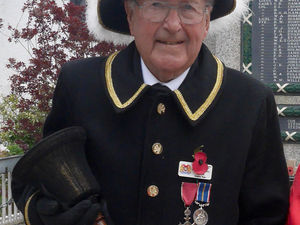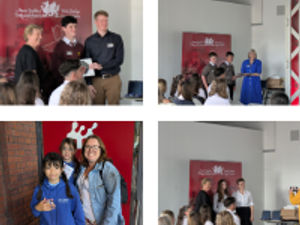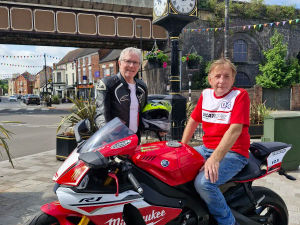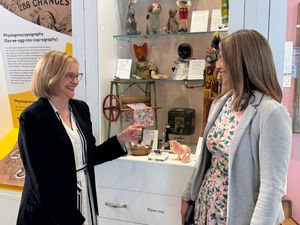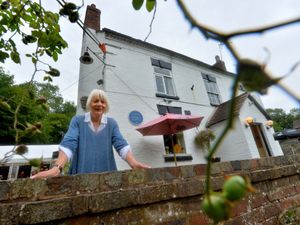Deadly raid which changed the face of warfare
The distant glow in the sky 80 years ago told Midlanders this was a bad one.
By morning Coventry was a destroyed city. Its dazed inhabitants picked their way through the smoking rubble and shattered glass.
That raid of November 14, 1940, codenamed "Moonlight Sonata," was to change the face of air warfare.
Involving around 500 German bombers, it was highly successful. Almost 30 vital factories were hit, halting production for the war effort for many months afterwards.
As the raid had intensified, a call for help was sent out, and firefighters were dispatched from Wolverhampton, Coseley, Bilston, Wednesfield, Tipton, Penkridge, and perhaps even from as far as Wellington (although that is unconfirmed).
Ambulances were also sent from Wolverhampton, although by the time they arrived all they could do was collect bodies.
During the massive bombardment a firestorm was started that decimated much of the city centre, and destroyed or damaged over 43,000 homes – just over half the city's total housing.
Tramlines were so badly damaged that the system never operated again.
Steered by a guidance beam to ensure accuracy, the Luftwaffe aircraft dropped 500 tons of high explosive, 30,000 incendiaries and 50 landmines in a rolling attack which lasted 10 hours.
Cities can be rebuilt. What could not be overcome was the human suffering, with a heavy casualty toll. The raid had killed 568 men, women, and children. The population of the city at the time was about a quarter of a million.
Overnight a new verb entered the German language – Koventrieren, to "Coventrate'', which meant to raze to the ground or annihilate.
That raid was intended to be the first of a hat-trick of devastating raids in the Midlands that month, the other two targets being Birmingham and Wolverhampton. For some reason, Wolverhampton was spared.
The Moonlight Sonata operation had a fundamental impact on a senior officer at the Air Ministry in London. Air Marshal Arthur Harris noted that it revealed the principle of starting so many fires at the same time that no emergency services could successfully get them under control.
He was later to become head of Bomber Command and deliver to Nazi Germany, many times over, the punishment that was meted out to Coventry that November 1940 night.
In the aftermath of the bombing, more than half of the population fled.
One observer wrote: "The overwhelmingly dominant feeling was utter helplessness. The tremendous impact of the previous night had left people practically speechless in many cases.
"There were more open signs of hysteria, terror, neurosis, observed in one evening than during the whole of the past two months in all areas."
One of the first fire bombs scored a direct hit on the medieval cathedral's roof, burning away oak timbers and melting lead sheets with the intensity of the blaze.
Water supplies for the firefighters dried up, leaving them helpless as it burned down.
As dawn broke there was nothing left but a shell. It was the only English cathedral to be destroyed during the war, although not the only one hit. The decision was immediately taken to rebuild it.
Services were still held in the bombed-out building and it quickly became a metaphor for the nation's struggle against tyranny.
A competition was held to design a new cathedral, which was won by architect Basil Spence. The Queen laid the foundation stone on March 23, 1956, and the new cathedral alongside the ruins of the blitzed building was consecrated on May 25, 1962.
By 1947, Coventry had adopted its first German twin city, Kiel. Dresden followed in 1956. The ruined cathedral now stands for international peace and reconciliation.
In the post-war era various conspiracy theories have grown up suggesting that Winston Churchill was tipped off about the Coventry raid, but chose to do nothing for fear of betraying the Enigma codebreaking secret to the Germans.
However, defences against the nightly raids were very weak at the time in any event. Coventry's anti-aircraft guns are said to have blasted off 6,700 shells at the aerial enemy, but only one of the raiders was shot down that night by anti-aircraft guns – and that was hit miles away, by a gun battery at Derby.
Roaming RAF nightfighters drew a complete blank.
Although the Coventry raid became symbolic of the whole Blitz, it was not Britain's most deadly attack. For instance, a raid on London in May 1941 left over 1,400 civilians dead.
Nor was that of November 1940 the last on the Midlands city. There were further big attacks in April 1941 and in total Coventry suffered 41 air raids.
And Wolverhampton? It was earmarked for a big attack at around the same time as the November raid on Coventry.
British codebreakers deduced that Wolverhampton was target Number 51, Birmingham was 52, and Coventry was 53.
First Coventry was hit, then Birmingham. So Wolverhampton was clearly next. Anti-aircraft gun defences were urgently beefed up. But the Wolverhampton raid never took place, one theory being that the Germans cancelled it on learning the defences had been improved.
Eavesdropping on a conversation between two German prisoners, one said after the Coventry and Birmingham raids there was to be one on Wolverhampton, under the codename "Einheitspreis.”
This translated as “unit price,” as at Woolworth’s where most things cost 6d – the store's name an echo of the target town of Wolverhampton.
Perhaps that German codename was fitting, as although Wolverhampton did not escape bombing, compared with Coventry and Birmingham it did not pay such a high cost.

